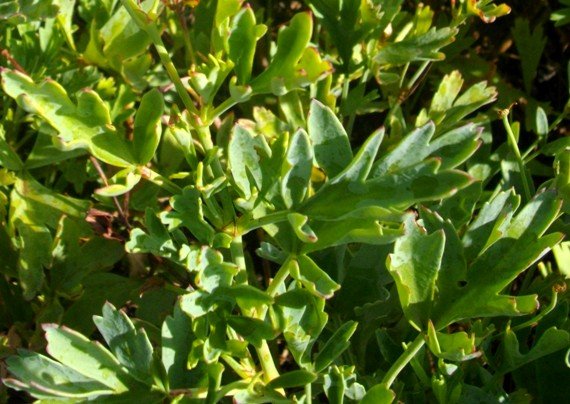Pelargonium laevigatum leaves

Author: Ivan Lätti
Photographer: Thabo Maphisa
The trifoliolate or sometimes unifoliolate leaves of Pelargonium laevigatum grow alternately on sturdy stalks. The three lobes are narrow and variably toothed, the central one longest. The leaves are hairless or sparsely hairy, slightly succulent and glaucous (grey-green or bluish). The leaf midrib may be visible, particularly in the lower part of the leaf. The leave have no scent. A leaf may become 5 cm long and 1 cm wide.
The specific name, laevigatum, is derived from the Latin verb laevigare meaning to polish or to make smooth, referring to the smooth, hairless or almost hairless leaves (Euston-Brown and Kruger, 2023; Vlok and Schutte-Vlok, 2015; Moriarty, 1997; iNaturalist; www.plantzafrica.com).

